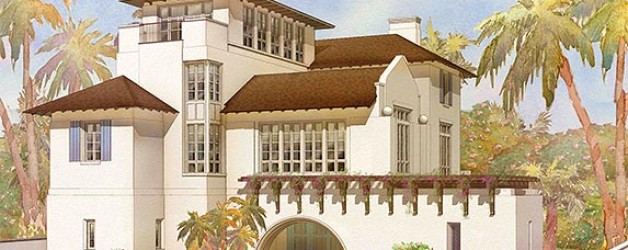Etymologically derived from the Italian parare, to cover or defend, and petto, breast, parapet walls are something of an object of fascination for me. Originally an architectural element incorporated as a means of protecting defenders of the edifice from armed attack, parapets are still that but much more. They are utilized to protect against falls and falling objects, to protect against the spread of fire, to obscure unsightly rooftop objects from view, to architecturally adorn principal elevations, and to adjust architectural proportion by adding height to a structure’s facade.
Generally speaking, parapets are extensions of walls rising above adjoining roofs and other relatively more horizontal structures, like the platform of a bridge, for example. Though they don’t seem to be native to all architecture, parapets are found across a broad spectrum of styles. Judiciously used in an appropriate vernacular, parapets add flair and interest. I think they deserve more of our attention.
A beautiful architectural rendering with a protective parapet for a third floor terrace and a gable wall parapet lend great charm to the whole.
A scalloped parapet is a nice detail for this garage door wall.
Several parapets of straight and serpentine lines and of different functions both adorn and provide protection against falls for this lovely beach community home.
Modern architecture often incorporates parapets to add height to a wall and to conceal a flat roof beyond, illustrating very nice clean lines and proportioning.
Try to imagine this handsome stone structure with a conventional gable wall raked with the rafters. Much more interesting and imposing this way, n’est-ce pas?
The architect of this striking urban home on a narrow lot makes the most of its one facade with cut-stone accenting and parapet gables. Nice job.
This example reminds of the 18th century London code banning projecting wooden eaves and requiring masonry parapet walls between closely built structures as an effort to limit the contagion of the all-too-frequent fires of the day.
Seemingly, the primary role of the parapets here is to act as a foil to the dominant circular bays.
I’d love to have this in my garden! I particularly admire the detailing at the bottom of the parapets to receive the abutting eaves.
The Dutch have long had a thing about parapet walls…a love affair that continues to this day.










